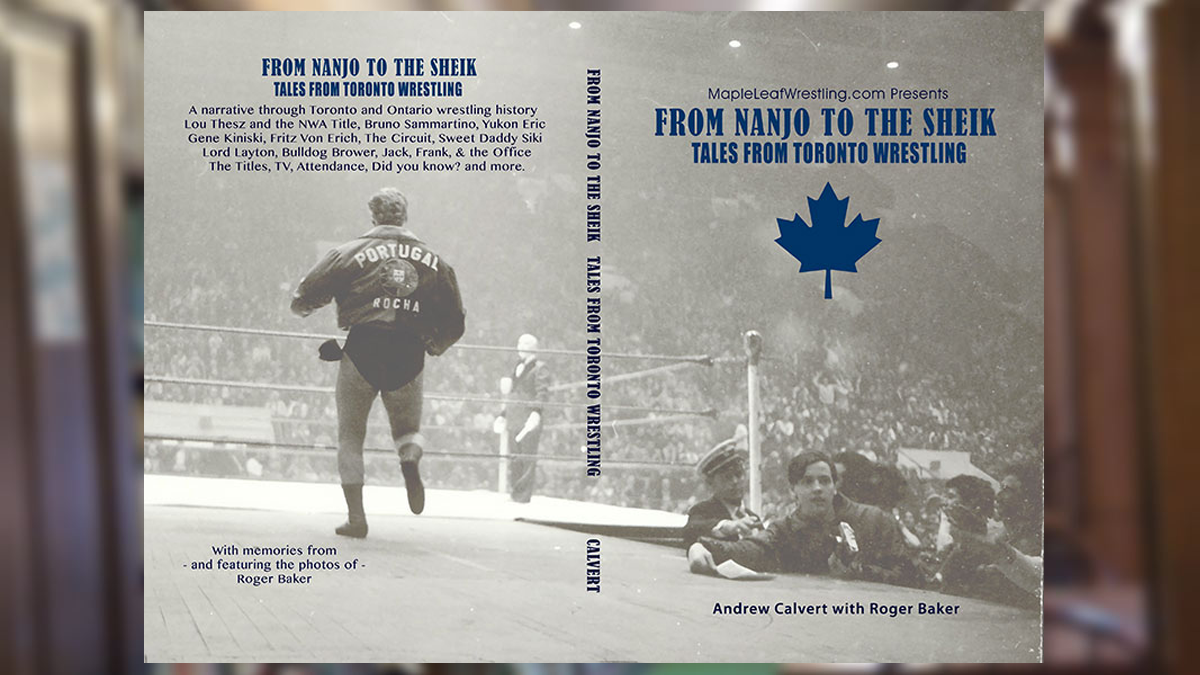Calvert and Baker educate readers on the history of pro wrestling in Toronto
Calling yourself a Toronto wrestling historian, and knowing very little about anything prior to 1978, is equivalent to calling yourself a Rhodes scholar with only a sixth grade education. For me reading From Nanjo to The Sheik: Tales from Toronto Wrestling written by Andrew Calvert with Roger Baker, out now and self-published, was an actual education in Toronto’s squared circle history. (EDITOR’S NOTE: Both Calvert and Baker have contributed stories to Slam.) Here’s some of what I learned from this fantastic book:
Before there was the havoc causing heels like The Sheik, Tiger Jeet Singh, Abdullah the Butcher or Bruiser Brody there was Nanjo Singh! Singh debuted in Toronto in 1938. Singh had an uncanny ability to “draw heat” from the Toronto fans, sometimes simply by hiding under the ring, causing fans to “smoke him out” (lighting little pieces of paper on fire and throwing them in the direction of the ring). His legendary feud with hometown hero Whipper Billy Watson packed arenas, off and on, from 1940 to 1966. The fans abhorrence for Singh, essentially gave birth to the first-ever wire fence match in 1942, the precursor to the steel cage match. And perhaps of greatest historical significance, was the installation of the infamous Maple Leaf Gardens (MLG) ramp, initially installed to protect Singh from the wrath of the vengeful Toronto wrestling masses. Singh was certainly not exempt from controversy outside of the ring, as he was convicted in 1958 of the murder of his wife, for which he served only eight years. Despite the severity of his heinous crime, after serving his sentence, Singh returned to the Gardens to rekindle his legendary feud with Watson in 1966.
The book also excellently details the rise to Toronto superstardom of the noble Sheik, who himself shattered box office records from 1969 through 1977, including a five-year undefeated streak.
The book comprehensively covers the history of the legendary Tunney family’s involvement in the Toronto wrestling scene, from Frank’s involvement in the office in 1931 to Jack aligning himself exclusively with Vince McMahon’s WWF (World Wrestling Federation, now World Wrestling Entertainment, WWE) juggernaut, in 1984.
You can almost imagine being there, in a smoke-filled Maple Leaf Gardens while reading of “packed houses” (18,000) and not so “packed houses,” as the book greatly details the peaks and valleys of attendance at MLG.
I was also enlightened to read about long-time National Wrestling Alliance (NWA) President Sam Muchnick’s involvement in the Toronto wrestling scene, and the importance of media support, from newspaper writers such as Joe Perlove, who I knew practically nothing about before opening this book.
The book covers notable feuds, debuts and the history of televised wrestling in Toronto. I learned a lot about the history of brother teams in Toronto – both real and kayfabe (presenting pro wrestling story lines as real). Calvert detailed the history of masked wrestlers in Toronto, from the Masked Marvel to The Grapplers, the important players in the Toronto wrestling office, the history of Toronto referees (both regular and special guest) and ring announcers, and ticket prices and start times through the years. Everything is covered: The NWA, American Wrestling Association (AWA), and WWF world title bouts in Toronto, from the 1950s through the 1980s.
What really helps bring this book to life, and takes you back to the golden age of wrestling action of Maple Leaf Gardens, are the priceless photos, from the archives of legendary photographer Baker. In addition there are many classic (although not always politically correct) newspaper advertisements.
Bruno Sammartino, Sweet Daddy Siki, Fritz Von Erich, Lou Thesz, and of course Watson, are all chronicled in this well crafted 238-page must-read. Although I am a fairly regular visitor to Calvert’s website, I still learned so much more in the pages of this book.
To Mr. Calvert and Mr. Baker: thank you for the wrestling education.




